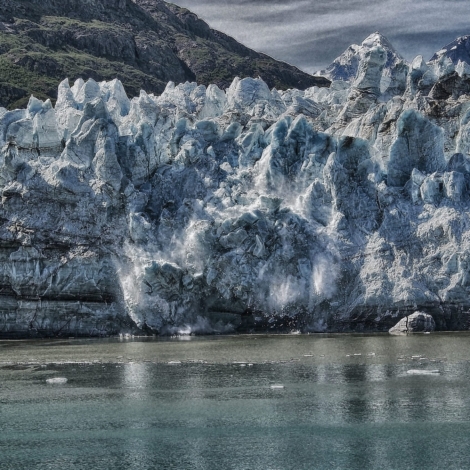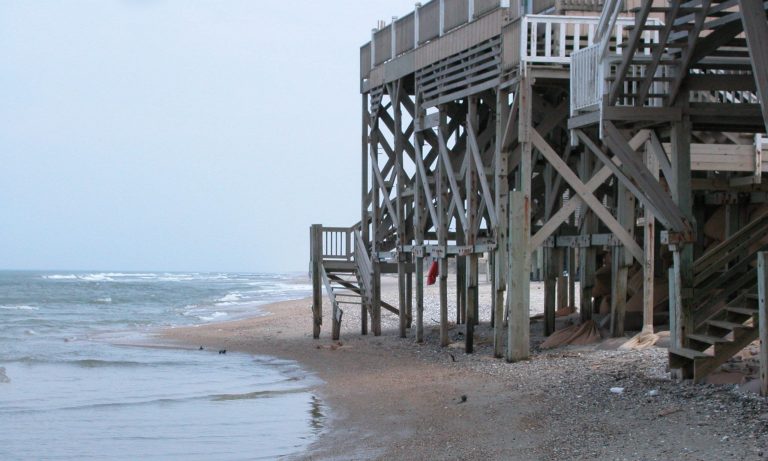Coastal communities worldwide are grappling with more frequent flooding, shoreline erosion, and the creeping threat of saltwater intrusion as climate change drives sea levels higher. A new analysis by NASA found that the global sea level rose faster than expected in 2024, and a study of melting glaciers provides yet more evidence of imminent sea-level rise. From 2000-2023, glaciers worldwide lost 273 ± 16 gigatonnes of mass each year. In that 23-year period, the world’s glaciers shrunk by five percent, and the rate of loss is apparently speeding up, according to research by the Glacier Mass Balance Intercomparison Exercise (GlaMBIE) Team, published as an open-source paper in Nature.
In response, tools and technologies are helping people adapt and build resilience. Some of these technologies are new and some are old reliables. From smart water systems to flexible housing designs, these are ten solutions that offer practical ways to survive the rising seas.
Careful siting and resilient construction
When done well, most engineered solutions should be boring. They should work, and people should be able to live in them and around them, but not have to think about them often. In that spirit, the first tool for surviving rising seas is the US Federal Emergency Management Agency’s Coastal Construction Manual. FEMA’s guide supports the proper siting and resilient construction of coastal buildings. Coastal homes can survive rising seas for longer when they are built in the right place, with the right materials, designs and construction standards.
And this manual provides guidelines on flood-resistant construction:
Early Warning: Hidrosonico
Hidrosonico is an open-source sonar-based stream gauge developed by DAI Maker Lab in Bethesda, Maryland (USA). It measures the distance to the water surface and sends readings at set intervals to the cloud, SMS, or email, based on user settings. Designed for hydrological data collection and flood early warning in underserved communities, it has been used in Cambodia, Honduras, Nepal, and Indonesia.
University of the Philippines Noah
UP Noah raises awareness about natural hazards in the Philippines to improve preparedness and reduce the impact of extreme weather events. It provides real-time hazard monitoring using imagery from Himawari-8, the Japanese geostationary weather satellite. Users enter a location in UP Noah’s online map to view current risk levels. The map uses color coding to show potential flood depths caused by continuous heavy rainfall, with a legend indicating specific levels.
In addition to live monitoring, UP Noah offers high-resolution maps that highlight areas at risk of floods, landslides, and storm surges. It also supports communities along 18 major river systems with a near real-time flood warning system to help them act quickly and stay safe.
Amphibious housing
Amphibious housing floats during floods and settles back when waters recede. The LIFT House is an interesting example. LIFT is designed for low-income families in flood-prone areas such as Dhaka, Bangladesh. Its core is anchored to the ground and provides essential services such as toilets, kitchens, water storage, and space for gardening. The dwelling areas float, rising with floodwaters. Designed by architect Prithula Prosun, the two-story structure can house two families and offers an adaptable solution for communities facing frequent flooding.
Floating schools
NLÉ and partners designed and built their original floating school as a prototype for a new kind of building suited to flood-prone coastal communities without permanent infrastructure. They chose a site on the Lagos lagoon and built with local materials for easy maintenance and replication. The structure provided passive ventilation, shade, and space for community use.
Unfortunately, it did not provide durability. The school collapsed in 2016 after about three years. NLÉ attributes the failure to lack of maintenance once the structure was handed over to the community, but some people in the community argue it was unstable early on. Not to worry, though, the school had been vacated months before the collapse and no one was injured.
Building on that first experience, NLÉ has since developed two new versions. MFS II has a similar look, but for this iteration the builders used imported materials, rather than local. And MFS III is a display model in Bruges, Belgium. Through its collapsed and its standing versions, this project continues to influence ideas about resilient, adaptable architecture on vulnerable coastlines.
Handy Pod wastewater treatment
Floating communities designed for flood resilience have unique sewage problems, and the HandyPod can solve them. HandyPod is a compact wastewater treatment system designed for floating and amphibious homes. It connects to a toilet to capture raw sewage and treat it on site using microbial biofilm.
Originally created for floating communities, the latest version is “amphibious,” meaning it works whether the home is on water or land. The system treats wastewater in two stages: first, it holds waste in a septic-like chamber for several days; then, it flows into a second chamber filled with microbes that break down harmful pathogens. The microbes live on surfaces inside the pod and feed on the waste, producing water clean enough to return safely to the environment.
Cost varies depending on household size and system requirements, but it offers a hygienic alternative to open defecation, especially in areas with limited sanitation infrastructure.
Sponge Cities
“Sponge cities” are designed to soak up rainwater using natural features such as trees, parks, lakes, and smart landscaping to help prevent flooding.
Cities such as Shanghai, New York, and Cardiff are leaning into this idea by adding inner-city gardens, better river drainage, and sidewalks lined with plants to manage water more naturally and effectively.
Learn More: What Are ‘Sponge Cities’ and How Can They Prevent Floods?
Rainwater Harvesting Systems
Groundwater and water underground may be contaminated with saltwater in flood-prone coastal regions, requiring an innovative means of collecting water for consumption and daily use. Desalination is one method, but rainwater harvesting may be more affordable and practical for some homes.
The Isla Urbana Chaac Kit is one example of a rainwater harvesting system that also purifies water for drinking.
Water desalination
Desalination may be important in coastal regions prone to saltwater intrustion. The Desolenator is a portable, solar-powered water purifier that turns saltwater into clean drinking water using solar energy. It’s designed to be modular, so users can choose the setup that fits their needs, making it flexible for different situations and communities.
Bonus: Earth Bags for Temporary flood control
Earth Bags are one of the things you would never want to have to use, but so much will depend on them if you do. Earth bag construction is a fast and durable building method that uses sturdy sacks filled with locally available materials like moist subsoil or gravel. Originating from military and flood-control techniques, the bags are stacked in layers, much like bricks, to form strong, stable walls with minimal resources.
There are many, many more tools and technologies that can save lives as sea levels rise. Some of those include sea walls, floating breakwaters, permeable pavements, mangrove restoration projects, elevated roadways, salt-tolerant crops and much more. The above are a snapshot of technologies archived in Engineering for Change’s Solutions Library and in our News and Insights pages, presented here to inspire preparation and spark ideas for innovation. Sea-level rise is happening and it’s progression is inevitable, but it may not be too late to prevent the worst case.

